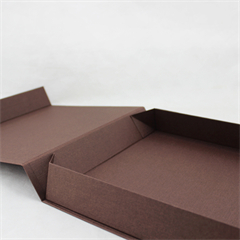There are several myths and misconceptions about wigs that can lead to confusion or misunderstandings. Here are some common wig myths debunked, separating fact from fiction:
Myth 1: All Wigs Look Fake
- Fact: High-quality wigs, especially human hair wigs and well-made synthetic wigs, can look incredibly natural. The key is in choosing the right wig type, color, style, and cap construction, as well as proper fitting and styling.
Myth 2: Wigs Are Uncomfortable to Wear
- Fact: Modern wig technology has improved comfort significantly. Many wigs are designed with breathable caps, lightweight materials, and adjustable straps to ensure a comfortable fit. With proper care and fit adjustments, wigs can be very comfortable to wear for extended periods.
Myth 3: Wigs Are Only for Hair Loss
- Fact: While wigs are commonly used to cover hair loss due to medical conditions like chemotherapy or alopecia, they are also popular for fashion and style purposes. Many people wear wigs to change their look, experiment with new hairstyles, or simply enhance their natural hair.
Myth 4: Wigs Are One-Size-Fits-All
- Fact: Wigs come in various sizes, from petite to large, and can be adjusted to fit your head comfortably. Accurate measurements are crucial in finding the right size for you.
Myth 5: Synthetic Wigs Can’t Be Styled
- Fact: While synthetic wigs are more resistant to heat than human hair wigs, they can still be styled to some extent. You can use low-heat tools, like curling irons or straighteners designed for synthetic hair, to achieve different looks. However, avoid high heat to prevent damage.
Myth 6: Wigs Cause Hair Loss
- Fact: Wearing a wig does not cause hair loss. In fact, wigs can protect your natural hair from environmental factors and manipulation, promoting hair health. However, it’s essential to care for your natural hair underneath the wig to prevent damage.
Myth 7: Wigs Require Constant Maintenance
- Fact: While wigs do require maintenance, the level of care varies depending on the wig type. Synthetic wigs are generally low-maintenance and retain their style after washing, while human hair wigs may require more styling and upkeep. Regular maintenance helps prolong the life of a wig.
Myth 8: Wigs Are Expensive
- Fact: While high-quality human hair wigs can be relatively expensive, there are budget-friendly options available. Synthetic wigs, for example, are often more affordable and come in a wide range of styles and colors to suit different budgets.
Myth 9: You Can’t Wear Wigs in Hot Weather
- Fact: You can wear wigs in hot weather. Look for wigs with breathable caps and lightweight materials to stay comfortable in warm temperatures.
Myth 10: Wigs Are Obvious to Others
- Fact: When properly fitted and styled, wigs can be very natural-looking and are often undetectable to others. Lace front wigs and monofilament caps, for example, create realistic hairlines and parting areas.
Myth 11: You Can’t Exercise or Swim in Wigs
- Fact: While it’s essential to secure your wig properly during vigorous physical activities or swimming, there are wigs designed for active lifestyles. Look for wig adhesives and accessories that provide a secure hold in these situations.
By debunking these common wig myths, it becomes clear that wigs are versatile, customizable, and can offer solutions for a wide range of needs and preferences. Whether for medical reasons, fashion, or convenience, wigs are a valuable tool for enhancing one’s appearance and confidence.









